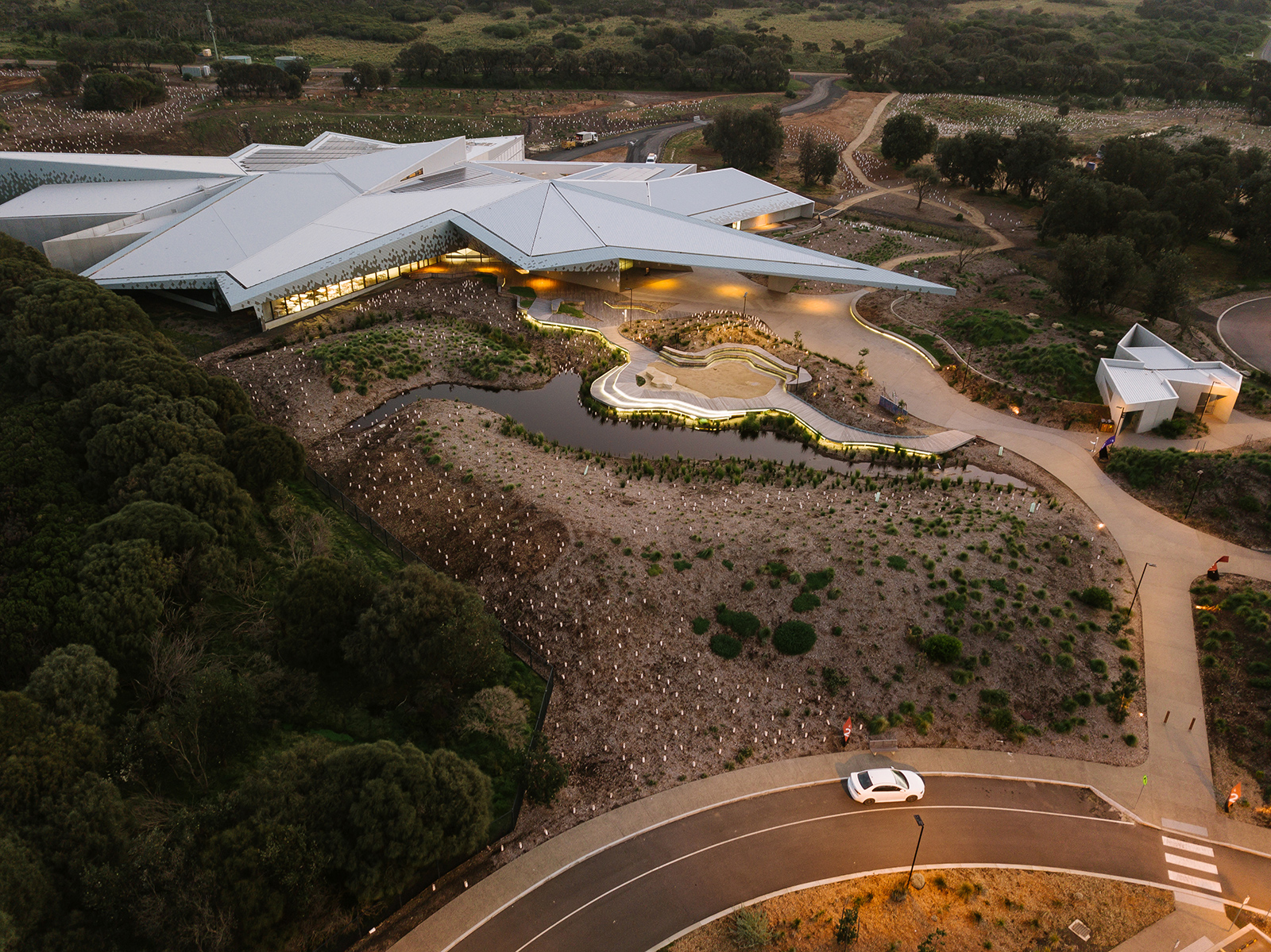
PEDESTRIAN, STREET & AREA LUMINAIRES
Providing gentle illumination for penguins on parade
Penguin Parade, Phillip Island, VIC
- Completed2018
- ClientPhillips Island Nature Park
- Sales PartnerBuckford Illumination Group
- Electrical EngineerStantec
- Lighting DesignStantec
- PhotographyIP Media for WE-EF
When it comes to lighting sensitive areas such as those inhabited by wildlife, it takes a specialist team and the right technology to produce an outcome that is effective, visually stunning and causes minimum harm to human and animal visitors alike. Such projects don’t come along very often; therefore, Mr Anthony Strangis and the team at Buckford Illumination Group in Victoria, a WE-EF sales partner, jumped at the chance to join the design team working on the lighting scheme for the famous Penguin Parade on Phillip Island.
Phillip Island Nature Parks is a unique conservation organisation that operates complementary ecotourism experiences on the island. The main attraction is the chance to see the resident Little Penguins returning ashore each night at sunset after their day’s fishing. Visitors can see the world’s smallest penguin in its natural habitat from viewing stands and boardwalks, and can learn more about them through interactive and educational displays in the visitor centre.
This one-of-a-kind project also required the expertise of a unique lighting company. Unique in the sense that WE-EF is the first company to have its products certified by the new ADSA Approved program. As a leading provider of exterior luminaires, WE-EF was instrumental in founding the new program with the Australasian Dark Sky Alliance.
Based on the International Dark Sky Alliance Fixture Seal of Approval program, the dedicated Australian three-tiered program will provide options of more dark sky sensitive solutions for anyone looking to install new outdoor lighting. One tier of the program is dedicated to certifying “wildlife sensitive” lighting for areas where the needs of local wildlife and ecosystems are a priority.
In the case of the Penguin Parade project, WE-EF supplied all external luminaires fitted with amber LED chips (as blue light needed to be eliminated), and the products were treated with the highest coastal protection treatments for longevity. “The key was WE-EF being able to source the amber LED chips rather than installing a filter or film,” said Mr Jean-Paul Kirkland from Stantec, the lighting design firm on the project.
The effects of artificial lighting on wildlife is still an emerging field, explained Mr Kirkland. “Our lighting design assisted with the mitigation of adverse effects on local wildlife through care and consideration of lighting levels, optical control, colour temperature and lighting control in order to provide an ambience for observers to safely move between locations during the evening.”
The four primary drivers in the development of the lighting scheme were: ecological sensitivity and context; place-making and identity; safety and way-finding; and robustness and longevity. For the bus and car parking area, lighting is provided around the vehicle parking bays to highlight the space for safe movement, with careful consideration to the surrounding environments using controlled illumination. Pole mounted luminaires are used in pathways leading from main car park areas and integrated into landscape mounds.
In both these areas, in addition to other open spaces, WE-EF’s VFL540 (single and dual mounting) luminaires are used. WE-EF DAC240 are also used for the lighting of canopies. “The products have superior protection treatments to suit coastal weather conditions. They have a 10-year warranty, proving that they back the luminaire quality,” Mr Kirkland said.
There were numerous challenges confronting the design team in the lighting of this unique project. For example, there were no high mast poles to be used throughout the project. “It was important to maintain clear sight lines for visitors as they enter the site in order for them to appreciate the visitor centre structure and coastal environment. We designed them to be as low as possible to accommodate tourist bus heights,” Mr Kirkland said.
LED amber chip light output is also less than typical 3000 K or 4000 K. This meant it was important to get the right light levels to ensure safe movement in accommodating high volumes of pedestrians and vehicles at night during peak times. “We did a thorough design and had Buckford Illumination Group’s design team review it, to ensure we met the expected light levels,” Mr Kirkland said.
Another challenge was presented by the building structure itself, which is complex, featuring an outer skin like scales. “Incorporating lighting into the allowed recesses was important to ensure adequate light levels for high volumes of visitors entering and exiting the building,” he said. “The WE-EF design team attended the site to assist in the mounting to ensure we had a neat installation.”
Mr Kirkland said having the support and assistance of Buckford Illumination Group was vital in overcoming the challenges of the project. “We were able to work collaboratively to provide quality lighting for this project”, he said. “We are very happy with the end result for the external spaces.”
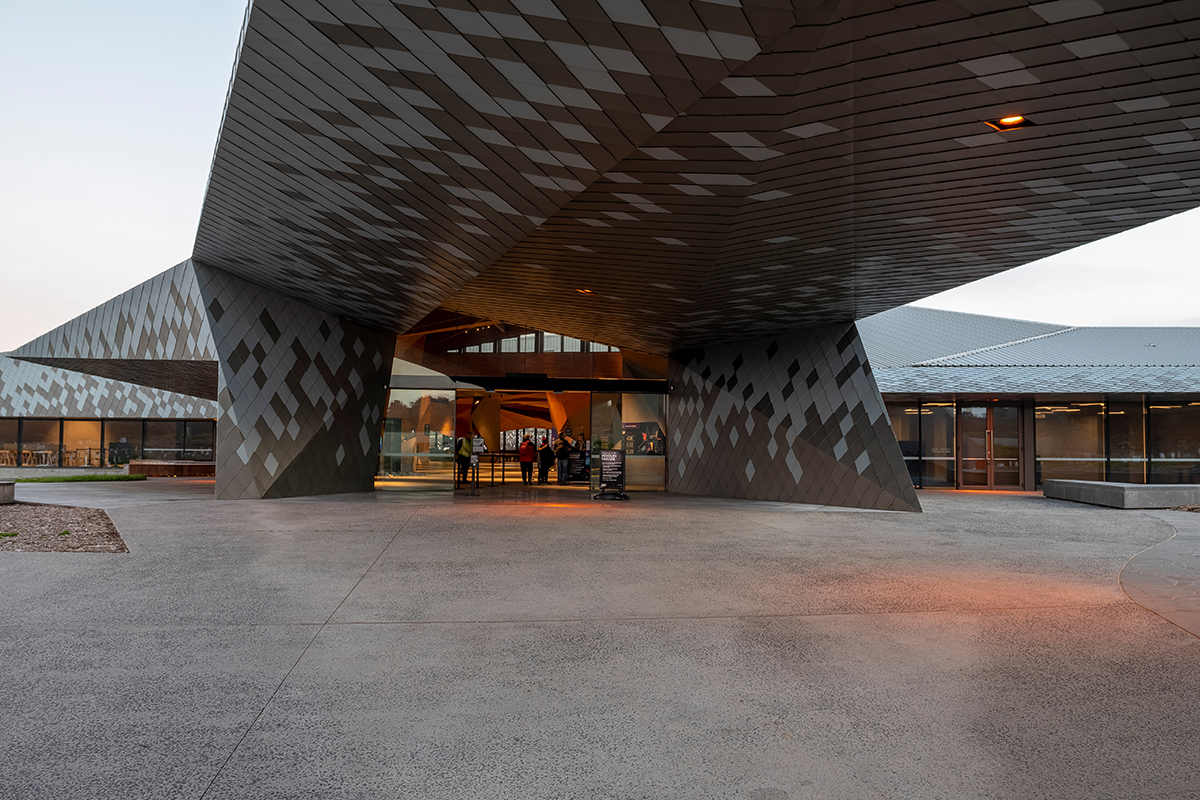
WE-EF DAC240 are used for the lighting of canopies.
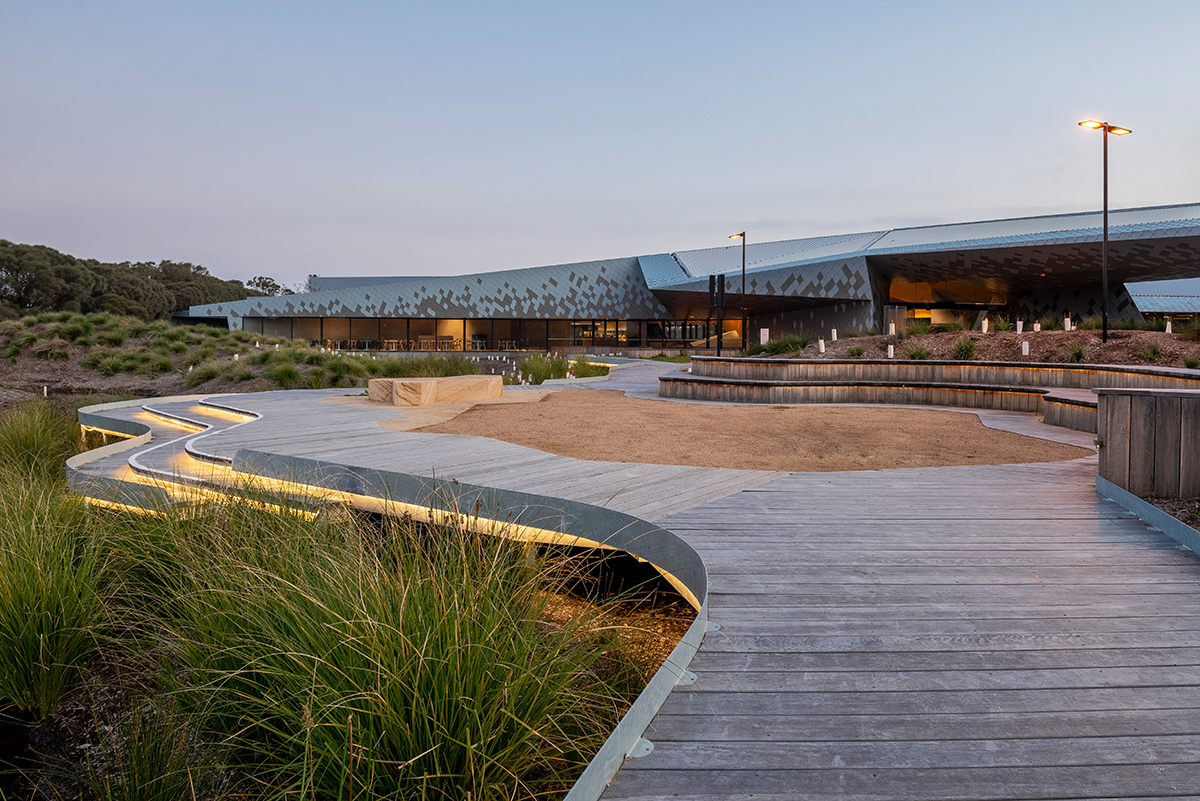
WE-EF supplied all external luminaires fitted with amber LED chips (as blue light needed to be eliminated), and the products were treated with the highest coastal protection treatments for longevity.
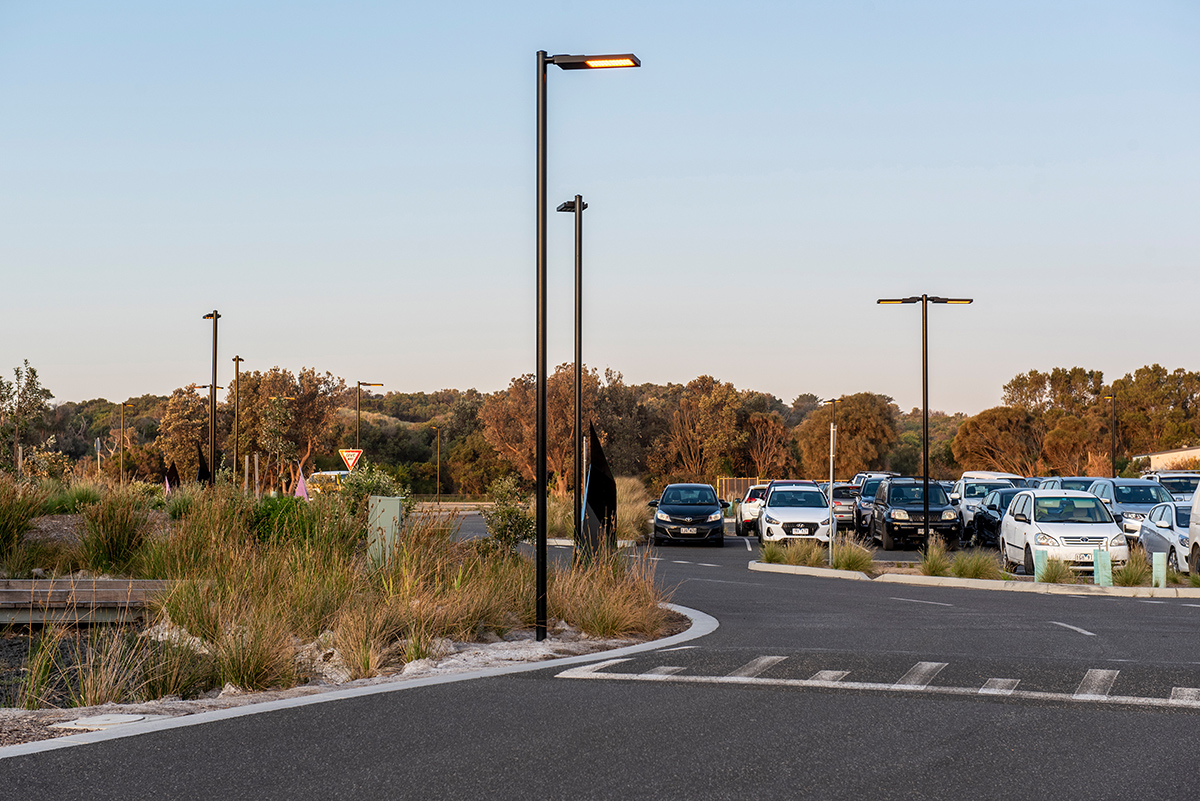
For the bus and car parking area, lighting is provided around the vehicle parking bays to highlight the space for safe movement, with careful consideration to the surrounding environments using controlled illumination.
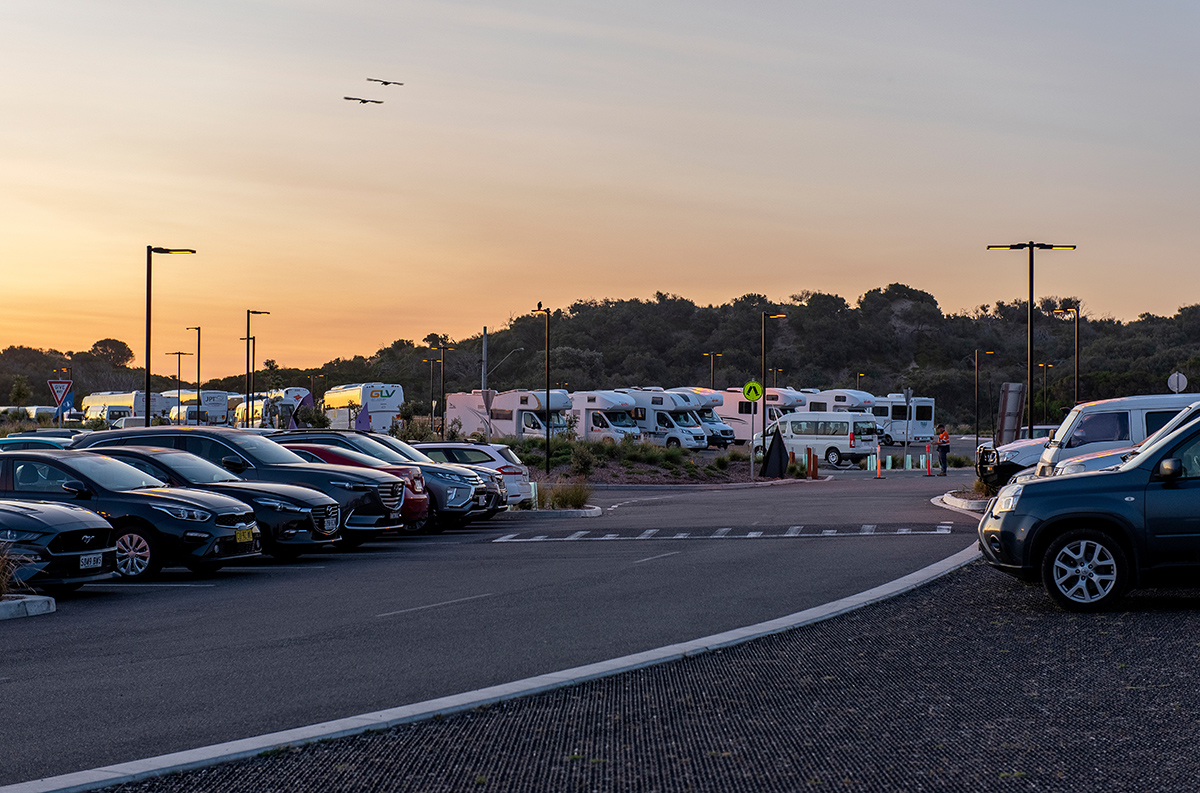
WE-EF’s VFL540 (single and dual mounting) luminaires are used to illuminate both main car park areas and landscape mounds.
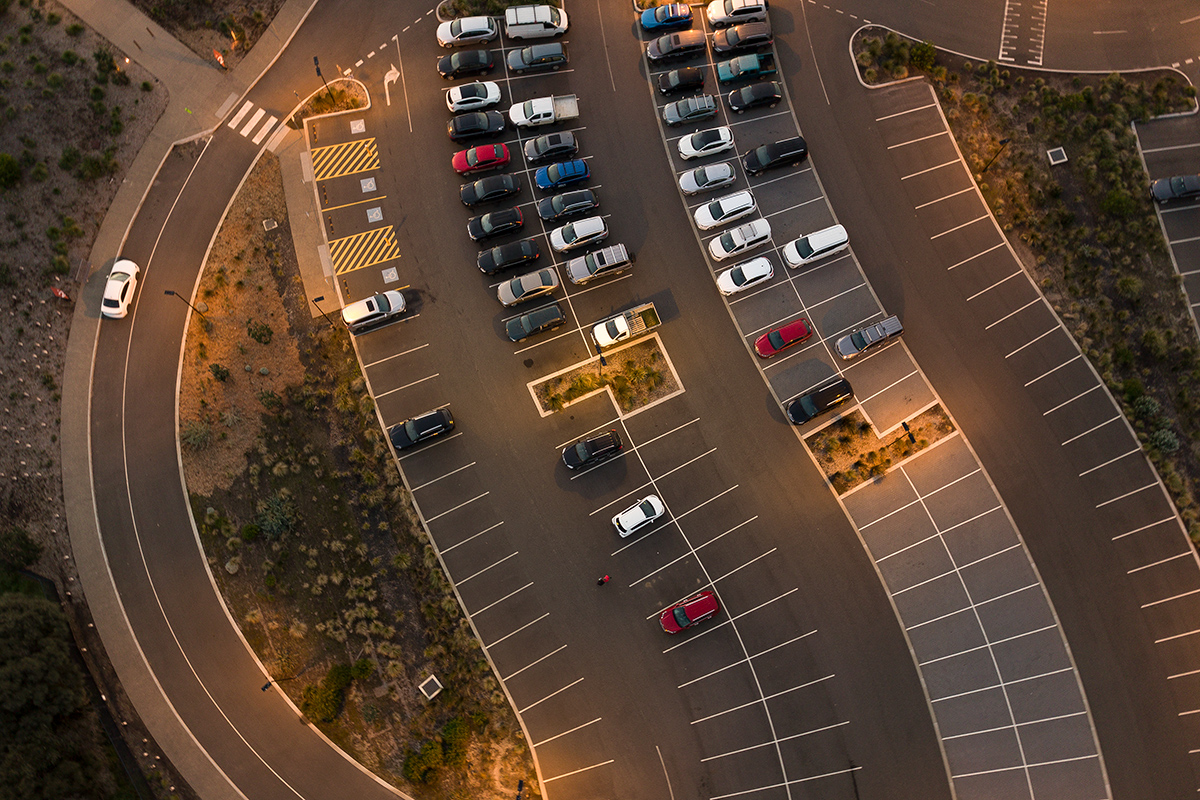
LED amber chip light output is also less than typical 3000 K or 4000 K. This meant it was important to get the right light levels to ensure safe movement in accommodating high volumes of pedestrians and vehicles at night during peak times.
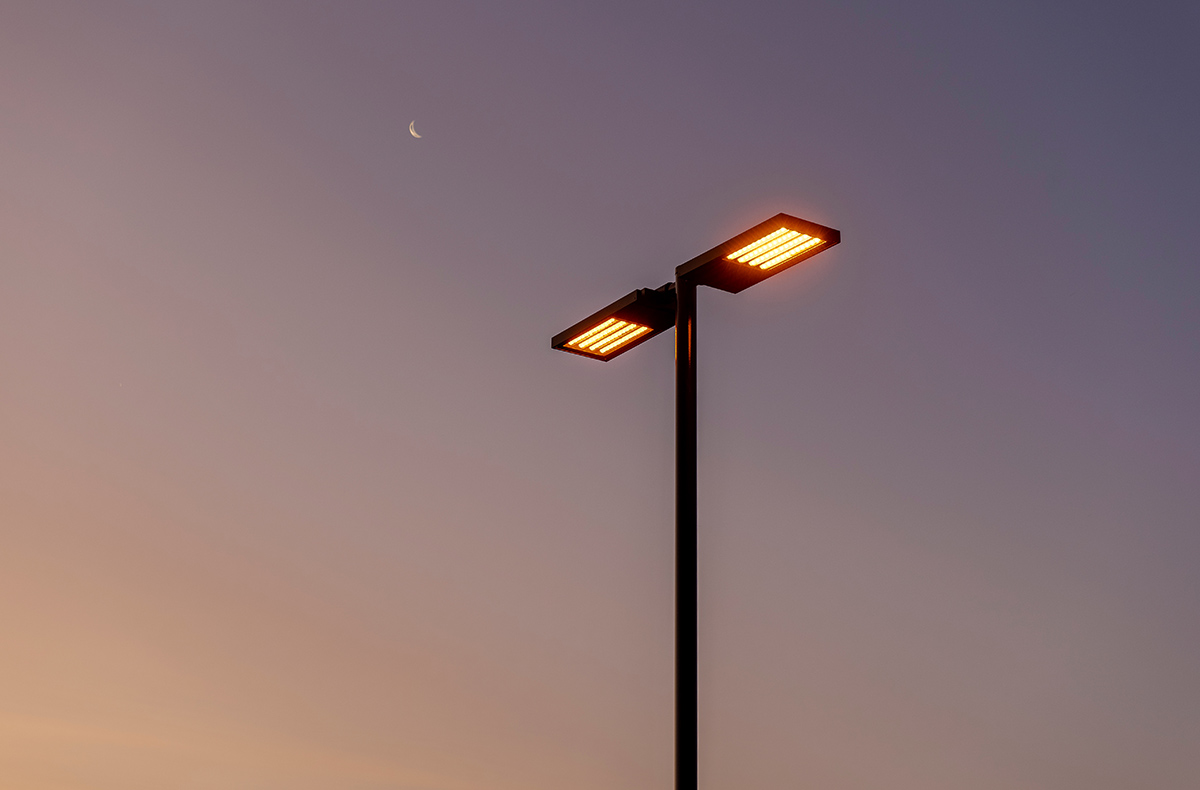
WE-EF is the first company to have its products certified by the new ADSA Approved program.

